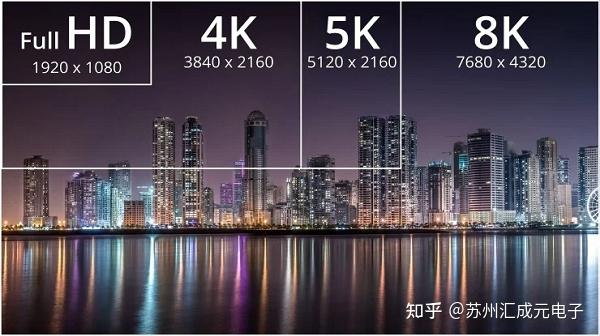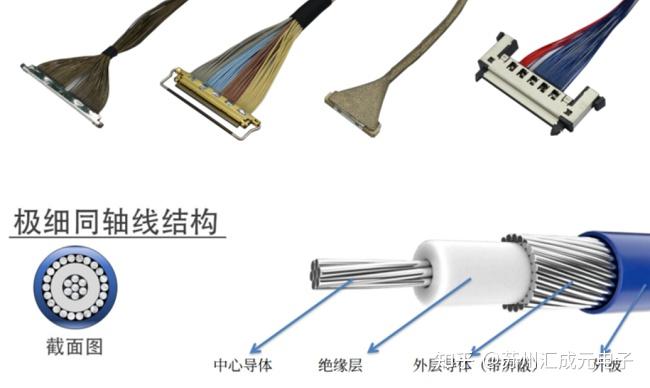Categorization:Harness Component
With the continuous development of display and imaging technology, 8K ultra-high-definition video is gradually moving from the professional field to public applications. From medical image diagnosis and industrial detection to high-end display terminals and immersive entertainment experiences, 8K presents new challenges to the bandwidth, anti-interference ability, and stability of the signal transmission system. Then, can the extremely thin coaxial cable (micro coaxial cable) meet the high-speed transmission requirements of 8K video signals?
One, the main characteristics of extremely fine coaxial beam
Extremely thin coaxial cable bundles are known for their compact structure, high flexibility, and strong anti-interference ability. They consist of a central conductor, insulation layer, shielding layer, and outer sheath, which can effectively reduce signal crosstalk and external electromagnetic interference. Due to their extremely small diameter, such cable bundles are often used in applications with extremely high requirements for installation space, such as laptop screens, industrial cameras, and endoscopic devices. In high-frequency signal environments, their low loss characteristics enable them to have the potential for transmitting high-resolution image signals.
Part Two, Technical Challenges of 8K Signal Transmission
The resolution of 8K video can reach 7680×4320, with a very high data transmission rate, which puts extremely strict requirements on bandwidth, impedance matching, and signal integrity. Taking the HDMI 2.1 standard as an example, its maximum bandwidth can reach 48Gbps, which means any slight impedance mismatch or inadequate shielding can cause signal attenuation or distortion. Particularly during long-distance transmission, ordinary cables are difficult to ensure stable output, and it is easy to encounter problems such as image flickering, delay, or noise interference.
Thermal fine coaxial cable in the application feasibility of 8K
In short-distance connections within the device, extremely fine coaxial cable bundles are fully capable of supporting the high-speed transmission of 8K video signals. By reasonably selecting the wire diameter, improving the shielding layer structure, and using insulating materials with low dielectric constants, high-speed and low-loss transmission can be achieved within a limited space. For example, in scenarios such as internal connections between camera modules and processing mainboards, and signal conduction within medical monitoring equipment, extremely fine coaxial cables can meet both high bandwidth and lightweighting requirements. However, if the transmission distance is longer or the electromagnetic interference in the environment is severe, signal equalization, amplifiers, or optoelectronic conversion technologies must be used in conjunction to ensure signal quality and image stability.
The extremely thin coaxial cable束 indeed has the potential to transmit 8K video signals, especially performing excellently in the field of short-distance high-speed interconnection. However, in long-distance or complex working conditions, relying solely on a single cable solution is still difficult to meet all performance requirements. Choosing the appropriate cable structure and matching technology is the key to perfect presentation of 8K ultra-high-definition video.
I am[Suzhou Huichengyuan Electronics], deeply cultivating in the field of high-speed signal cable harness and ultra-fine coaxial cable harness, committed to providing customers with high-bandwidth and high-reliability interconnection solutions. If you have relevant project requirements or want to learn more about product information, welcome to contact:Manager Yin 18913280527 (WeChat number same)We look forward to working together with you to build higher-quality signal transmission systems.